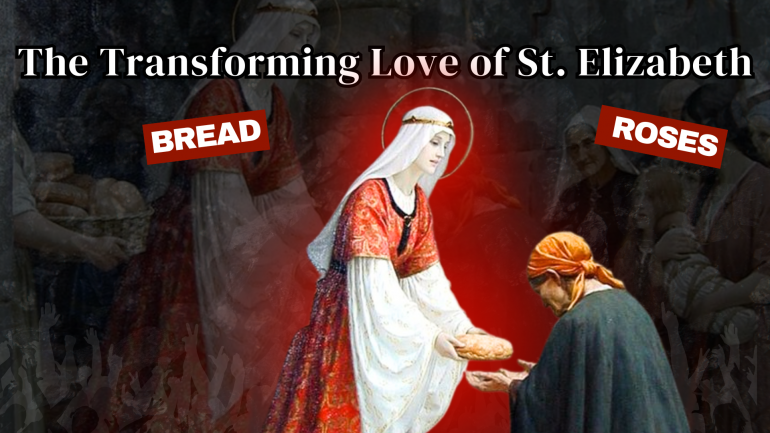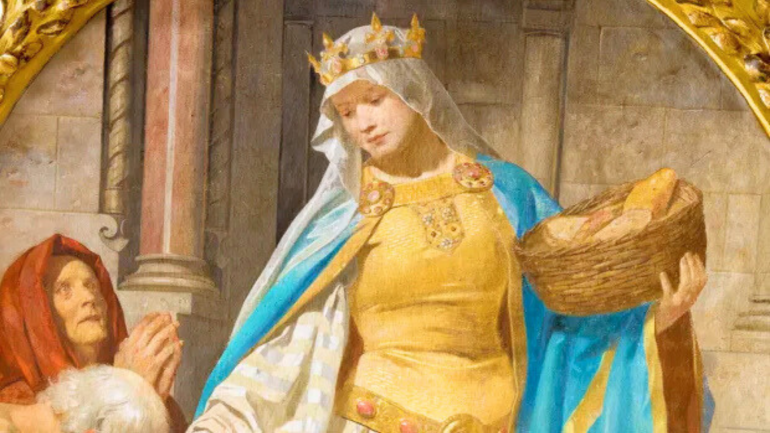Bread into Roses: The Transforming Love of St. Elizabeth

In a time when corruption eats away at the soul of societies and climate change threatens the very balance of our common home, the story of Saint Elizabeth of Hungary stands like a steady flame against the darkness. Her life, though rooted in medieval Europe, speaks with striking relevance to the struggles of our modern world, especially here in Asia, where poverty, inequality, and ecological crises remain pressing realities.
Born in 1207 to Hungarian royalty, Elizabeth’s early life was steeped in privilege. Yet from an early age, she showed a remarkable detachment from power and wealth. Her heart inclined toward mercy. At fourteen, she married Ludwig, the Landgrave of Thuringia, and quickly became known for her devotion to the poor. Unlike others of her rank, she refused to remain behind palace walls. Instead, she walked among her people, offering food to the hungry and care to the sick.
Over time, her actions became a living symbol of faith in motion. The most well-known story associated with her life tells of bread turning into roses, an image that perfectly captures Elizabeth’s spirituality.
One day, when she was stopped by nobles who mocked her generosity, they asked Elizabeth to show them what was inside her cloak. As she opened it, the loaves had turned into roses. Bread into roses, a miracle, yes, but also a message. When love is given freely, it transforms even the most ordinary acts into something beautiful. For Elizabeth, charity was not simply almsgiving; it was a way of revealing the beauty of love in the midst of human suffering. Her faith animated her generosity, transforming ordinary acts into expressions of something more divine.

When her husband died unexpectedly, Elizabeth’s life took a harsher turn. She lost her position and possessions and was left to care for her children in poverty. Despite being cast out of comfort, she did not despair. She continued to serve, to build hospitals, to care for lepers, to love until she had nothing left to give. By the time she died at twenty-four, people saw in her not just a noblewoman, but the image of God’s merciful love itself.
Her story carries deep resonance for Asia and especially for the Philippines today, where the challenges of poverty, corruption, and ecological imbalance mirror the injustices of her own age. In the recent devastating typhoon that wreaked havoc in the Philippines, it unveiled the sad truth that progress often comes at the expense of the poor and the environment. Forests are stripped, rivers are polluted, and public trust eroded by greed. In this context, St. Elizabeth’s life reminds us that the truest act of public service does not come from the grand gestures of the greedy who only seek attention, but from the pure hearts of those who give little yet give with all that they have.
Her example demonstrates that holiness is not withdrawal from the world but courageous engagement with it. Elizabeth used her influence for service rather than gain, teaching that faith must always bear fruit in justice and care for creation. Her witness suggests that in times of corruption, true discipleship demands honesty, and in moments of crisis, devotion must take the form of stewardship.
Following her example today means cultivating hearts that refuse indifference. It invites a deeper awareness of how one’s daily choices affect others—how resources are used, how integrity is lived, and how compassion is practiced. Small, consistent acts of love can become instruments of transformation, echoing Elizabeth’s simple gestures of care.

Her life also challenges communities and institutions to live by the same principles. Integrity in workplaces, transparency in service, and accountability in leadership are modern extensions of her legacy. Within families, the same spirit is passed on by raising children to value both people and the environment.
Perhaps the most powerful element of her story lies in its simplicity. St. Elizabeth did not wait for ideal circumstances to act; she began with what she had, her hands, her time, her willingness to serve. In that simplicity, holiness became tangible. Her story reveals that sanctity is not an extraordinary calling but a daily choice to love beyond measure.
Her feast day on November 17 serves as a yearly reminder of this enduring truth. It challenges believers to become signs of hope, beauty, and mercy in a world that often feels dominated by greed and despair.
In the end, St. Elizabeth of Hungary stands not only as a figure from the past but as a guide for the present. Her life invites each of us to turn our own “bread” into “roses”, to let compassion transform the ordinary into the sacred, and to build a more humane and hopeful world.








